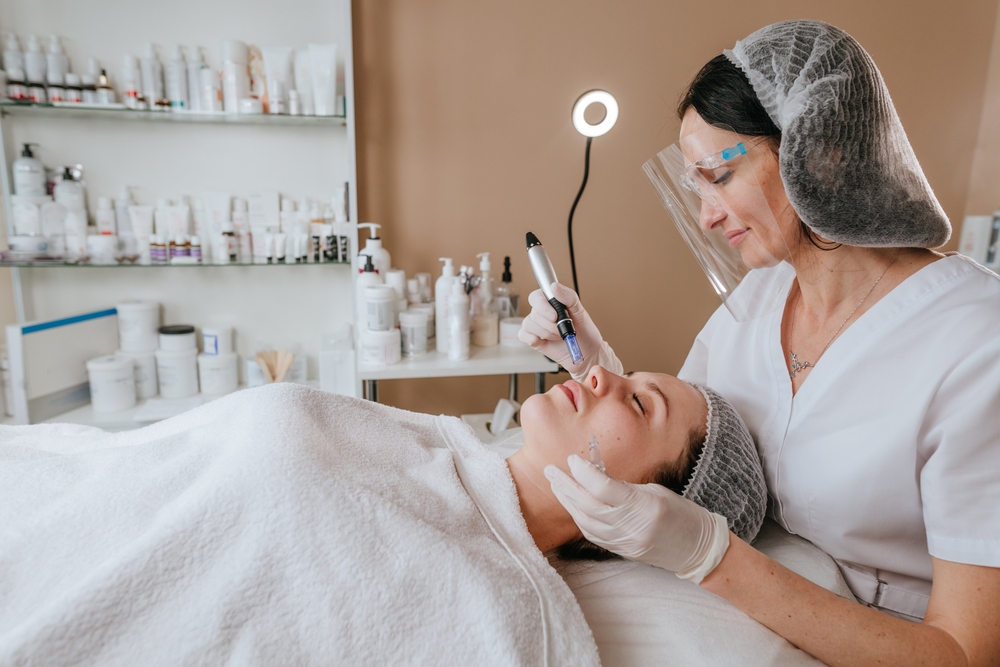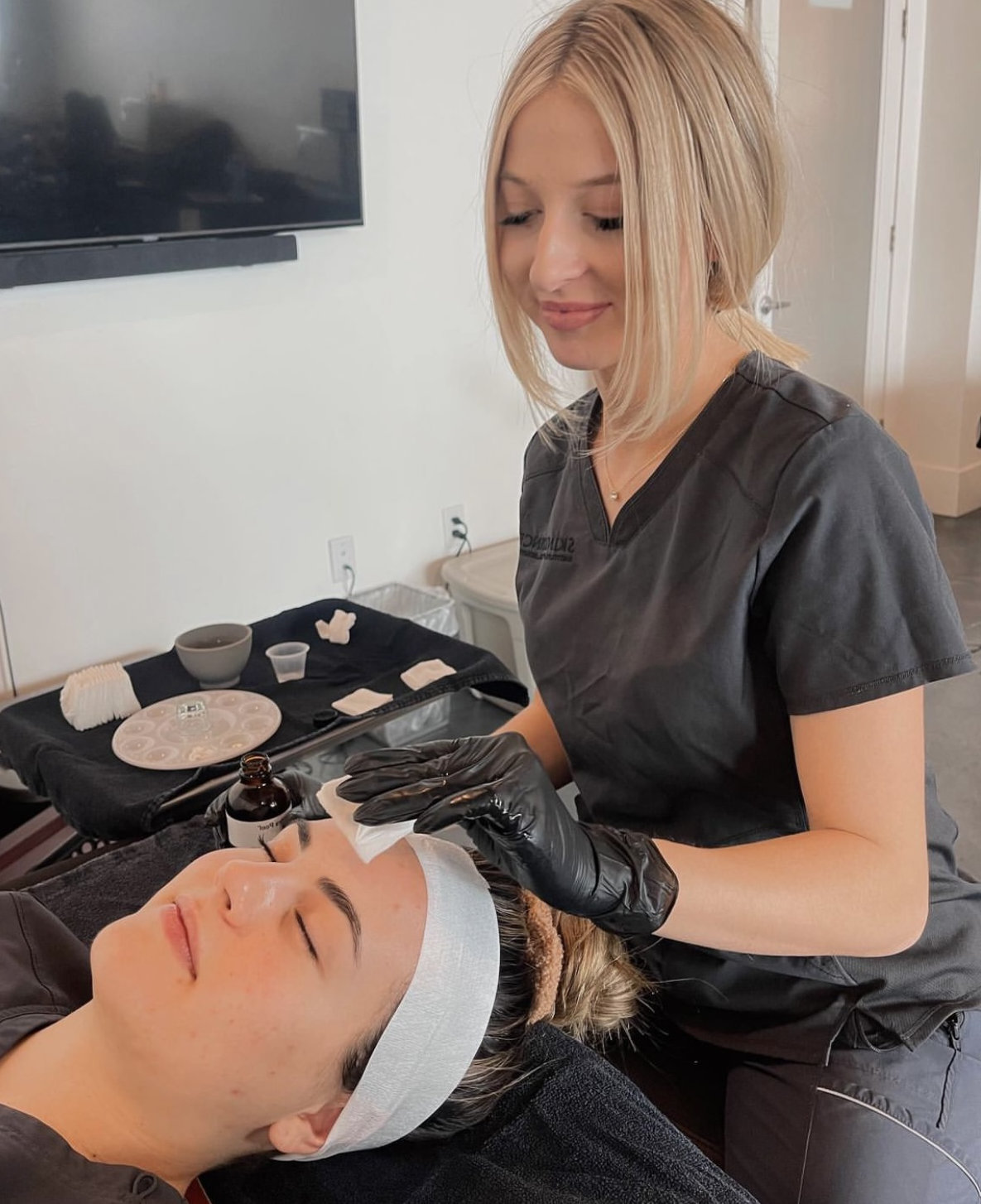At Skin Science Institute, with locations in Sandy and Orem, Utah, we offer a basic esthetician program and a master esthetician program to meet the needs of our students. Below, our esthetician school instructors explain the difference between the two programs so you can decide which is right for you.
Basic Esthetician Classes
If you are interested in working in the skin care field and getting your esthetician license, the place to start is by taking a basic esthetician course. In Utah, in order to get an esthetician license, you must take 600 hours of classroom and hands-on training.
In the classroom setting, our teachers target our curriculum to the state licensing exam, teaching you everything you need to know to pass the test. Our classes include lessons on eyelash extensions (plus lash tinting and perming), skin care such as facials, manicuring, waxing and more.
When people think of skin care, they often think just of faces. And while faces are important because they are usually the first part of a person you notice, it is important to remember that our skin is the largest organ in our body.
Because so many men and women today are interested in hair removal, waxing is a big business. But it has to be performed correctly. Mistakes in waxing can result in burned or broken skin, rashes and even infection. Learning hair removal techniques is a big part of esthetician school.
Nail care is also part of being an esthetician — after all, nails are simply hardened skin. As such, they need to be taken care of and nourished, not just beautified.
After you complete your 600 hours of classroom training and hands-on training in our spa, you will be ready to take the state licensing exam. Once you pass, you will be able to work as a licensed esthetician in the state of Utah.
Master Esthetician
To become a master esthetician, the state requires another 600 hours of classes and hands-on training. The good news is that you can make the choice to become a master esthetician at any time. Suppose, for instance, that once you complete your basic esthetician requirements, you want to move right on to becoming a master esthetician. At Skin Science Institute, this is an option.
But what if you want to work first for a period of time as an esthetician? You may want to make sure you like the work, or you may want to see if it is satisfying enough that you do not feel the need to become a master esthetician. Waiting is always an option.
Additionally, what if you would like to become a master esthetician but want to take a break before tackling this next hurdle? That is a reasonable choice, and you may return at any time to take our master esthetician course.
Master Esthetician Requirements
Master estheticians are sometimes called medical estheticians because they perform more complex and potentially dangerous procedures. While basic estheticians may work in a clinical setting, they more often work in spas or beauty salons, providing facials and waxing services. Many of our graduates report they enjoy this work, creating and mixing facials based on the client’s goals and seeing how pleased they are with their results.
Other students are more interested in working in a doctor’s office or dermatology clinic. In these settings, master estheticians perform procedures such as:
Chemical peel: A chemical peel is the least invasive of the skin-care procedures master estheticians do in a medical setting. For a chemical peel, the esthetician applies a mild acid to the skin, leaving it on for a preset period of time depending upon the patient’s goals. The acid is then removed, and within a few days, the patient’s skin begins to peel, shedding its top layer. The skin underneath is brighter, and discoloration is lessened.
Mistakes made with chemical peels can result in chemical burns and scarring, and this is why only master estheticians are allowed to perform this procedure.
Microdermabrasion: During a microdermabrasion procedure, a master esthetician uses a tool that abrades the surface of the skin. It is similar to a chemical peel, but works immediately, and the penetration is deeper. Microdermabrasion is often recommended to improve the appearance of scars, including stretch marks.
The risks of microdermabrasion include bruising, abrasions, dryness and skin sensitivity.
Microneedling: A microneedling tool is equipped with dozens of tiny needles that penetrate the skin. The needles cause micro-injury to the skin, and in the healing process, the skin becomes plumper and more youthful-looking.
It is possible to buy microneedling tools online for home use, but this is very dangerous. Microneedling usually results in some bleeding, and improper use can lead to infection, scabbing and scarring.
Dermaplaning: Dermaplaning has even more risks because it involves a blade. The procedure involves removing hair from the face with a blade, leaving skin baby-smooth and soft. Done incorrectly, dermaplaning can result in irritation, breakouts and infection.
Laser skin resurfacing: Lasers are substitutes for scalpels and other types of blades, and require the same caution when using. The purpose of laser skin resurfacing is the same as the skin care procedures mentioned above — to remove the dull, outer layer of skin to reveal the fresh, new inner layer. It’s fast and relatively painless, so it’s popular, but again, the proper training is required.
Esthetician School in Utah
What we listed above is just a sampling of what you’ll learn in master esthetician classes at Skin Science Institute. Our students report that becoming a master in their field brings them a profound sense of accomplishment — as well as the ability to earn significantly more money.
To learn more about taking master esthetician classes at Skin Science Institute — serving Provo, Lehi, Bluffdale and other major cities in northern Utah — contact us today.




